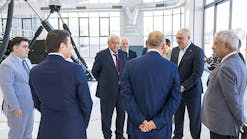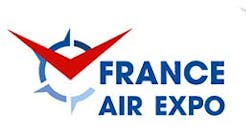The New Part 147: Where Are We Now?
Lots of behind-the-scenes activity is taking place in preparation for the new part 147. The expectation is that a new rule will be issued this summer, so it’s a good time to sit back, take a breath, and assess where we’re at, and opportunities coming down the pike.
First, a quick recap: Title 14 Code of Federal Regulations (CFR) part 147 governs aviation maintenance technician schools that hold a Federal Aviation Administration (FAA) certificate. The regulation was originally established under the Civil Aviation Administration and re-codified into 14 CFR in 1962. Since that time, neither the regulation, nor the subject areas it dictates be taught, have significantly changed. During the same time, the design regulations mandating the standards to which a civil aviation article must be certificated and maintained have changed innumerable times. These changes have enhanced safety significantly; they also mandate more sophistication and knowledge in maintenance personnel.
Everyone agrees the rule needs revising. A 2003 Government Accountability Report (GAO) report called for updates to curriculum requirements, recognizing that certificated programs do "not fully prepare A&P mechanics to work on commonly flown, technologically advanced commercial aircraft,” and that “today’s modern aircraft require A&P mechanics to have a different set of skills than those being taught at aviation maintenance technician schools.” An Aviation Rulemaking Advisory Committee, made up of industry and FAA representatives, issued a December 2008 report with specific recommendations to update static minimum curriculum requirements dictated in part 147.
Since then, ATEC has been at the forefront of the demand for change. In November 2015, the FAA issued a part 147 notice of proposed rulemaking. ATEC submitted extensive comments, calling for a less-prescriptive rule that would allow for competency-based programs and the freedom to cater training to industry needs. ATEC’s position was supported by 14 aviation organizations, discouraging the NPRM’s continued reliance on class time at the expense of technical capability. To continue the momentum, ATEC representatives held face-to-face meetings, submitted supplemental comments and garnered legislative support for a rule that would provide better trained personnel to meet industry workforce needs.
During roughly the same period of time, an FAA-industry working group undertook a massive effort to improve airframe & powerplant (A&P) mechanic certification testing. The Aviation Maintenance Technician (AMT) Airman Certification Standards (ACS) will replace current practical test standards (PTS), and clearly define minimum knowledge and skill requirements for A&P mechanics. Once completed, the ACS will provide the framework for the written, oral and practical mechanic tests; and subsequently, a guide for revising handbooks, oral questions, practical projects and the knowledge test bank. That means outdated questions and projects will be replaced with relevant assessment material, and incorrect, incomplete or inadequate questions and projects will be updated or removed.
Promulgation of the new part 147 and AMT ACS development couldn’t be more perfectly timed. The new rule will utilize operations specifications in lieu of static curriculum requirements; industry’s hope is that those operations specifications will simply reference the ACS, ensuring that training and testing are directly correlated. What’s more, the joint FAA-industry committee will periodically review and update ACS standards to ensure it is in line with mechanic knowledge and skill requirements as technology evolves. And, under a new rule allowing for competency-based programs, AMTS can focus on ensuring a student can demonstrate required knowledge, skills and attitudes (as defined in the ACS!), instead of required training hours.
ATEC Treasurer and Embry-Riddle Aeronautical University Associate Professor and Department Chairman Chuck Horning has volunteered hundreds of hours to help usher through the new generation of regulations and standards, “We have an incredible opportunity right now that probably won’t happen again. We started this initiative hoping for a rule change and never dreamed we would have the opportunity to improve the testing process. Now we have the chance to do both and have all the pieces of the puzzle fit like they should.”
ATEC will continue to engage with the agency and congressional leaders to support timely promulgation and smooth implementation. The council will also ensure its member schools have the tools and resources required for a successful transition; webinars, curriculum guides, tools and resources are in development. Take advantage of all ATEC has to offer, and support the council's workforce development efforts, by ensuring your membership is current.






